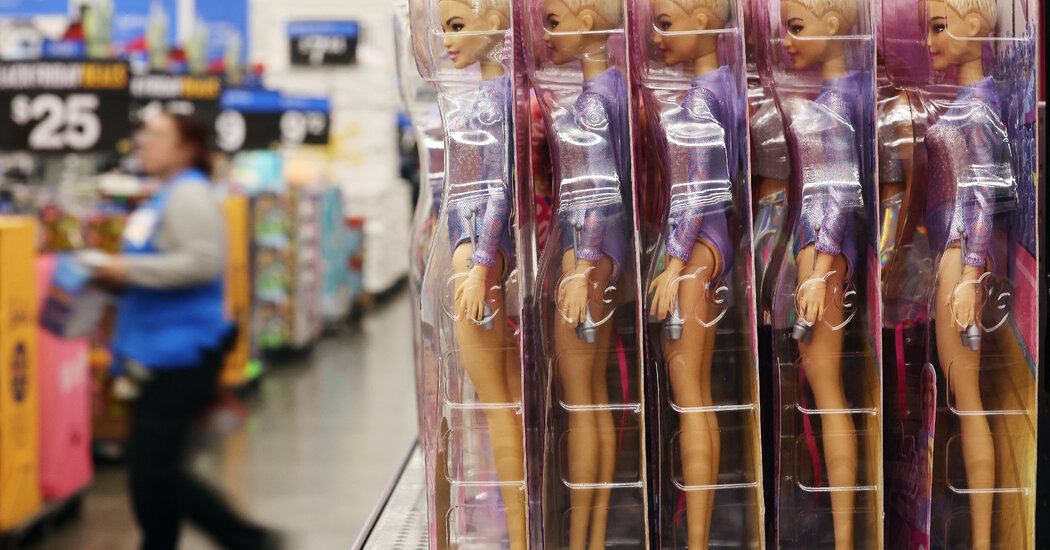There’s a scene from the 2023 movie “Barbie” in which arched feet step out of high heels onto the ground. And stay arched. It took the actress Margot Robbie eight takes to perfect the trick and it set off a social media frenzy almost akin to a collective gasp.
For a group of podiatrists in Melbourne, Australia, that scene became fodder for a group chat — the angle of that arch, the weight on the balls of her feet. When Barbie’s heels eventually touched the ground, those podiatrists saw the beginnings of a research paper.
“We were talking about how nice it was to finally see Barbie in flat shoes and to see Barbie making all of these different shoe choices based on what she had to do in her day,” Cylie Williams, an academic podiatrist at Monash University, said in a phone interview.
It seemed, to the group of researchers, that Barbie’s empowerment was tied to the structure of her feet, in the same way that everything about Barbie — her body shape, her skin color, her lifestyle choices — are tied to the Everywoman.
“We went, ‘Do you reckon that’s actually a thing?’” Dr. Williams said. “And we are researchers — we’re curious — so we kind of went, ‘Let’s have a look at this, this could be fun.’”
“Just so we’re clear,” she added, “we are serious researchers.”
Their curiosity has culminated in a new peer-reviewed study, published on Wednesday, that examines the correlation between Barbie’s foot posture and her social standing. It also examines, amusingly enough, the reputation of high heels in society.
Dr. Williams and two other podiatrists, including a male colleague, Ian Griffiths, who refers to himself as the “diversity hire” of the group, teamed up with their friend — an occupational therapist, Suzanne Wakefield, who happens to be a lifelong Barbie collector with a personal collection of about 800 dolls.
Together, they examined the feet of 2,750 dolls that were produced from 1959 to 2024. They measured each doll against a metric they had devised: foot posture (flat or arched?), equity (diversity of the doll), employment (is she a fashion girl or a working girl?) and time (the release year). Yes, the metric spells F.E.E.T.
“I would like to say something really smart about that but, you know, it was Friday night, we were texting each other going, ‘We need to make something up that we can audit,’” Dr. Williams said. When they came up with F.E.E.T., “we couldn’t have high-fived each other harder if I tried.”
The researchers found that, over time, Barbie’s feet did indeed go through a revolution. In the early decades of Barbie’s life, 100 percent of the dolls had arched feet. In the last four years, only 40 percent did. “Employed” dolls were far more likely to have flat feet, while fashion-focused ones were more likely to have the extreme arch.
The researchers reiterated, in the interview and in their paper, that this evidence did not determine cause-and-effect and, in order to maintain scientific independence, they did not contact Mattel to find out if the design decision had been intentional.
In a statement emailed to The New York Times, Mattel confirmed that foot design was indeed a deliberate part of Barbie’s evolution “with reimagined footwear options to support Barbie’s bold steps forward.”
“Barbie’s leisure choices have expanded,” Ms. Wakefield said, sitting in front of her Barbie calendar, clutching her Barbie mug. “She was originally designed as a fashion doll and so, if you look at a lot of her choices of leisure, it was going to the opera, or it was having tea parties or going to a ball. Now we see Barbie going skiing. I’ve got scuba diving Barbie — she does a whole lot of other things that are not high heel-oriented at all.”
As women entered the paid work force, high heels landed at the center of “ongoing, never resolved questions of feminism,” said Andi Zeisler, the author of “We Were Feminists Once: From Riot Grrrl to Cover Girl, the Buying and Selling of a Political Movement.” They have been perceived simultaneously as objects that sexualized women, particularly in male-dominated spaces, and as symbols of power that “telegraphed a sense of purpose and control.” They have been, over the decades, abandoned by feminists, then reclaimed, then scapegoated by health professionals as the root of all the joint aches that ail women, lending a sheen of science to the rejection of the footwear.
While high heels can be painful, they can also be fun and joyful expressions of personality that do not, in Dr. Williams’s eyes, deserve the negative medical attention. There is no conclusive evidence demonstrating that these shoes cause the common aches and pains associated with them, Dr. Williams said, and women should be free to choose which footwear suits each situation they find themselves in, as Barbie does. “Health care professionals need to shut up a little bit more,” she said.
And she offered some advice: “If you want to wear high heels, wear high heels.”











